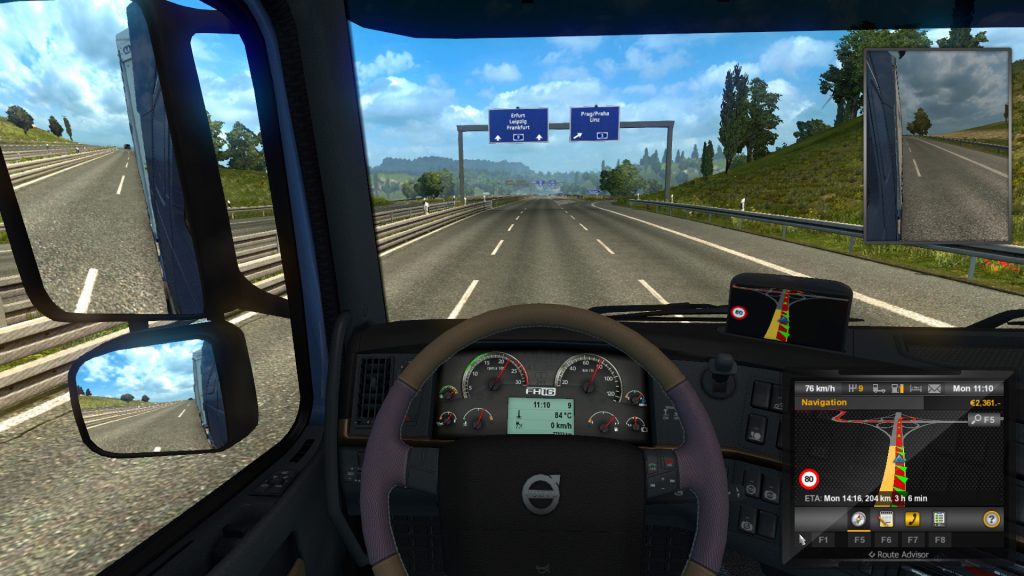Distracting Interfaces
During my ongoing literature review I often discover interesting facts about things I’ve never thought about. Sometimes I can connect these facts with my own observations: The result is mostly a completely new idea why things are as they are. Maybe these ideas are new to you, too. Therefore I’ll share my new science based knowledge with you!
This week: This time, I think about the importance of communicating all information directly inside of the virtual worlds in the case of a simulation game. Adding an additional visual information layer above the simulation reduces a player’s acceptance.
Simulation games target a realistic simulation of a specific activity, e.g., driving a race car or flying an aircraft. They encode real world principles in their game mechanics to achieve similar requirements to the real world activity and to provide an authentic visualization of the gameplay. Also, encoding the underlying principles is important to accurately simulate the effects of a player’s actions. In the end, simulation games target the provision of the illusion to actually perform the presented activity.
Aside from encoding the underlying principles, an effective simulation game requires well-designed interaction techniques and a believable user interface. Interaction techniques seem more natural and work best when they achieve a high degree of authenticity. This, of course, also depends on the available hardware. For instance, controlling vehicles only using a keyboard will not be as natural as using a steering wheel or a joystick. Thus, to yield a high believability, it is important to implement techniques that closely mirror the real world interaction techniques.
Providing a believable user interface mostly is straightforward as designers merely have to remodel the cockpits of the simulated vehicle. In this way, important information, such as speed, remaining fuel, and altitude, are communicated in the same way as in the real world. Such an integrated interface that provides information directly inside of the 3D virtual environment is called a diegetic interface. These interfaces seem more natural as they avoid providing an additional visual layer, i.e., a non-diegetic interface, on top of the actual information.

The GPS interface (lower right corner) is layered on top of the simulation. This breaks the immersion and reduces the believability.
This also is critical for information and menus providing access to further gameplay elements. While finding and implementing methods to integrate these elements in a diegetic way might be more complex, it reduces a player’s irritation and enhances the believability of the simulation.
For instance, Euro Truck Simulator 2 requires players to activate a non-diegetic GPS interface to find information about the remaining distance, the destination, and the status of the on-going contract. This causes a high degree of distraction as this GPS then is layered on top of a truck’s cockpit. As a result, the immersion of sitting inside the cockpit is reduced. A better solution would be to communicate these information by directly integrating the GPS into the cockpits. This would still provide access to all relevant elements while avoiding a negative effect on the believability.
In conclusion, providing diegetic interfaces enhances a user’s acceptance of the simulation. The provided information are then a part of the game and not communicated via an extra layer that does not exist in the real world.